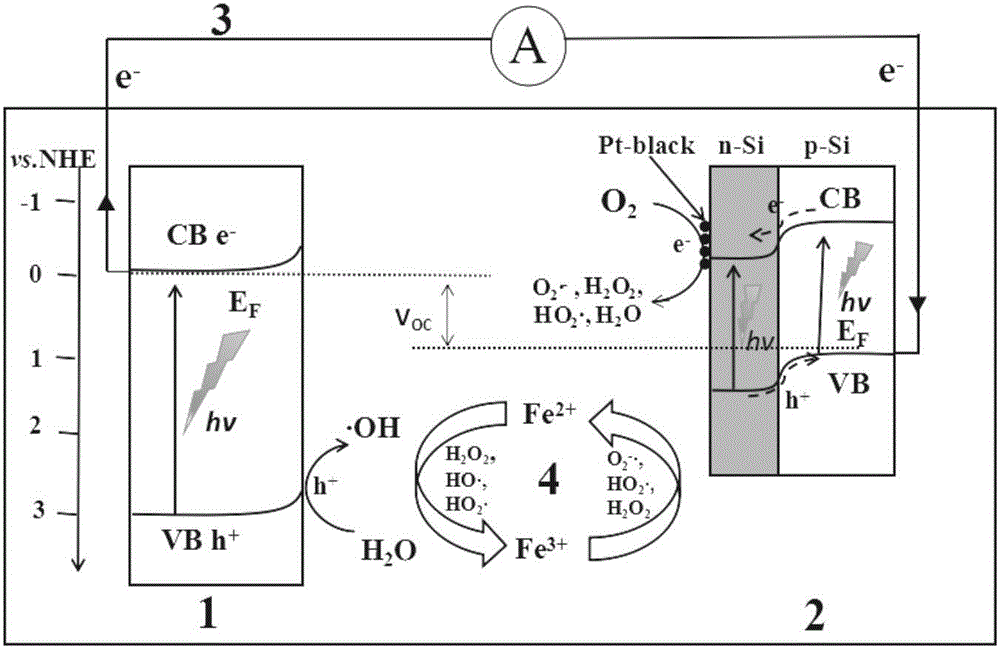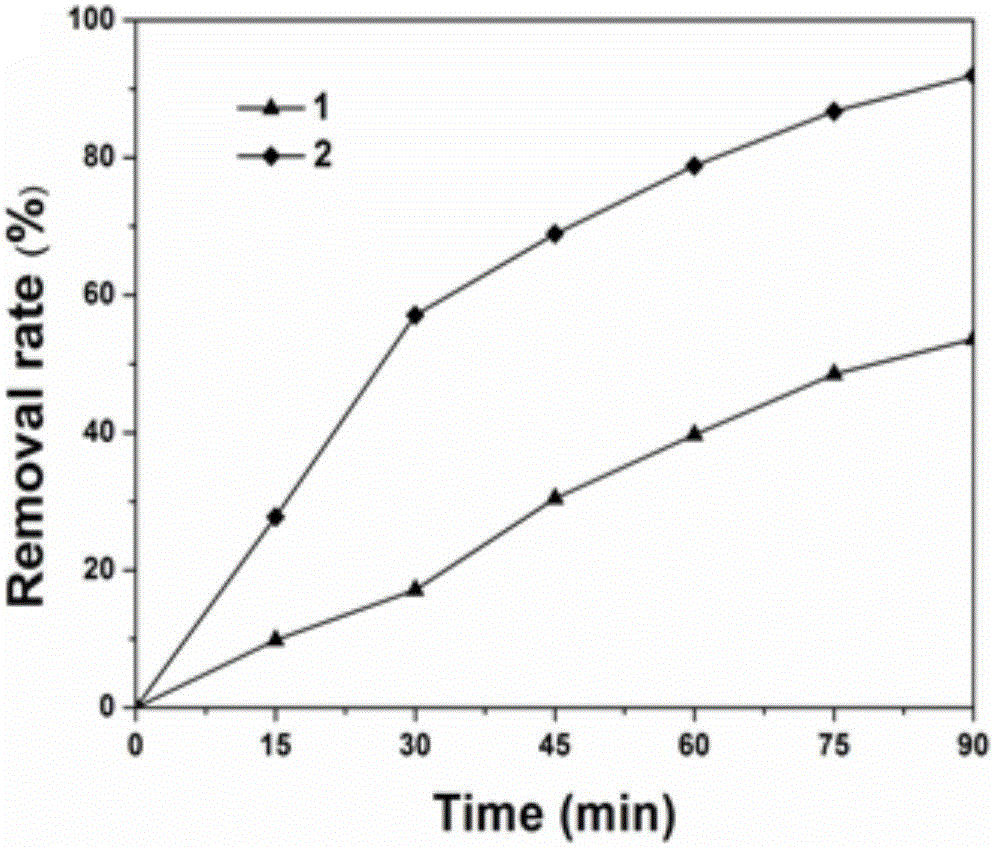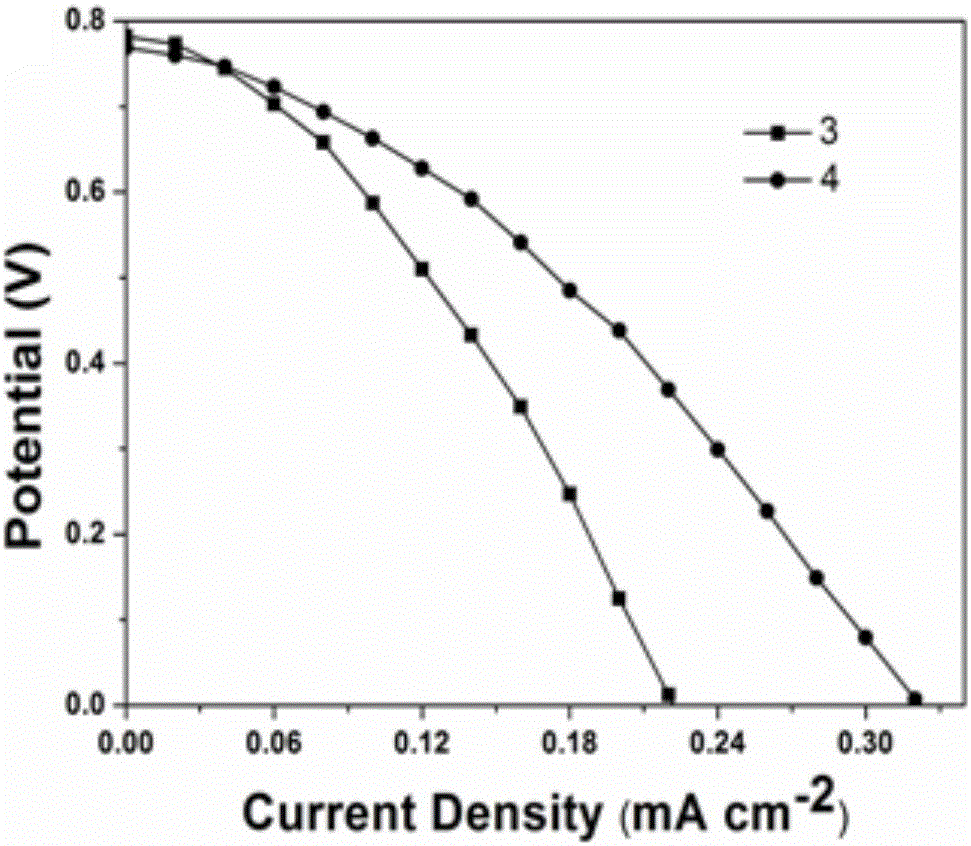Photocatalytic wastewater fuel cell capable of strengthening free radical reaction, and preparation method and application of photocatalytic wastewater fuel cell
A fuel cell and free radical technology, used in fuel cell control, fuel cells, fuel cell additives, etc., can solve the problem that the specific surface area of the electrode cannot be increased infinitely and depends on the specific surface area of the electrode, etc., and achieves degradation of organic pollutants. The effect of power generation capacity improvement, performance improvement and cost reduction
- Summary
- Abstract
- Description
- Claims
- Application Information
AI Technical Summary
Problems solved by technology
Method used
Image
Examples
preparation example Construction
[0044] The preparation method of the photocatalytic waste water fuel cell of strengthening free radical reaction of the present invention, it comprises the steps:
[0045] 1) The photoanode 1 is traditional TiO 2 Nanotube array, its fabrication method is: use the cleaned metal titanium sheet as the anode, place in 0.5wt% hydrofluoric acid aqueous solution, use the platinum electrode as the counter electrode, and control the voltage increase rate to 1V s -1 , accompanied by magnetic stirring, anodized at 20V for 30min, and then the metal titanium sheet was taken out, rinsed with deionized water for 2 to 3 times, air-dried and placed in a muffle furnace, sintered at 450°C for 3h, and the temperature of the muffle furnace rose Both the rate and the rate of decline are 1°C min -1 , the required TiO can be obtained after sintering 2 Nanotube Array Photoanodes.
[0046] 2) The negative electrode 2 is a Pt / PVC (Pt modified Si solar cell) photocathode or a platinum black electrode,...
Embodiment 1
[0051] First, the cleaned metal titanium sheet is used as the anode, placed in 0.5wt% hydrofluoric acid aqueous solution, and the platinum electrode is used as the counter electrode, and the voltage increase rate is controlled to be 1V s -1 , accompanied by magnetic stirring, anodized at 20V for 30min, then the titanium sheet was taken out, rinsed with deionized water for 2 to 3 times, air-dried and placed in a muffle furnace, sintered at 450°C for 3h, the temperature rise rate of the muffle furnace and the rate of decline are both 1°C min -1 , the required TiO can be obtained after sintering 2 Nanotube Array Photoanodes.
[0052] Solder copper wires on the back field silver grid of the silicon cell, seal the entire back field with an epoxy resin-based adhesive to prepare a silicon cell (PVC) photocathode, and then use the PVC photocathode as a working electrode, at K 2 PtCl 6 0.5mol / LK with a content of 1mmol / L 2 SO 4 (with H 2 SO 4 Adjust the pH to 1) in the solution,...
Embodiment 2
[0063]TiO will be produced 2 The nanotube array is used as a photoanode 1, and the prepared Pt / PVC is used as a photocathode 2, which are respectively inserted into a 0.1M sodium sulfate electrolyte solution containing 20mg / L methylene blue, and 0.1mM ferrous ion 4 is added to the solution and the electrolyte The pH of the solution is adjusted to 4.0, and it is connected through an external circuit 3 . Turn on the simulated sun light source (the light intensity is 100mW cm -2 ) irradiation, the ferrous ion 4 and the free radicals and related substances generated on the surface of the photoanode 1 and the cathode 2 produce a Fenton-like cycle reaction under the self-bias of the photocatalytic fuel cell, thereby strengthening the free radical reaction in the system, A photocatalytic fuel cell can achieve a substantial improvement in the degradation of methylene blue and the ability to generate electricity.
[0064] The photocatalytic waste water fuel cell that strengthens the ...
PUM
| Property | Measurement | Unit |
|---|---|---|
| Photocurrent density | aaaaa | aaaaa |
| Photocurrent density | aaaaa | aaaaa |
Abstract
Description
Claims
Application Information
 Login to View More
Login to View More - R&D
- Intellectual Property
- Life Sciences
- Materials
- Tech Scout
- Unparalleled Data Quality
- Higher Quality Content
- 60% Fewer Hallucinations
Browse by: Latest US Patents, China's latest patents, Technical Efficacy Thesaurus, Application Domain, Technology Topic, Popular Technical Reports.
© 2025 PatSnap. All rights reserved.Legal|Privacy policy|Modern Slavery Act Transparency Statement|Sitemap|About US| Contact US: help@patsnap.com



